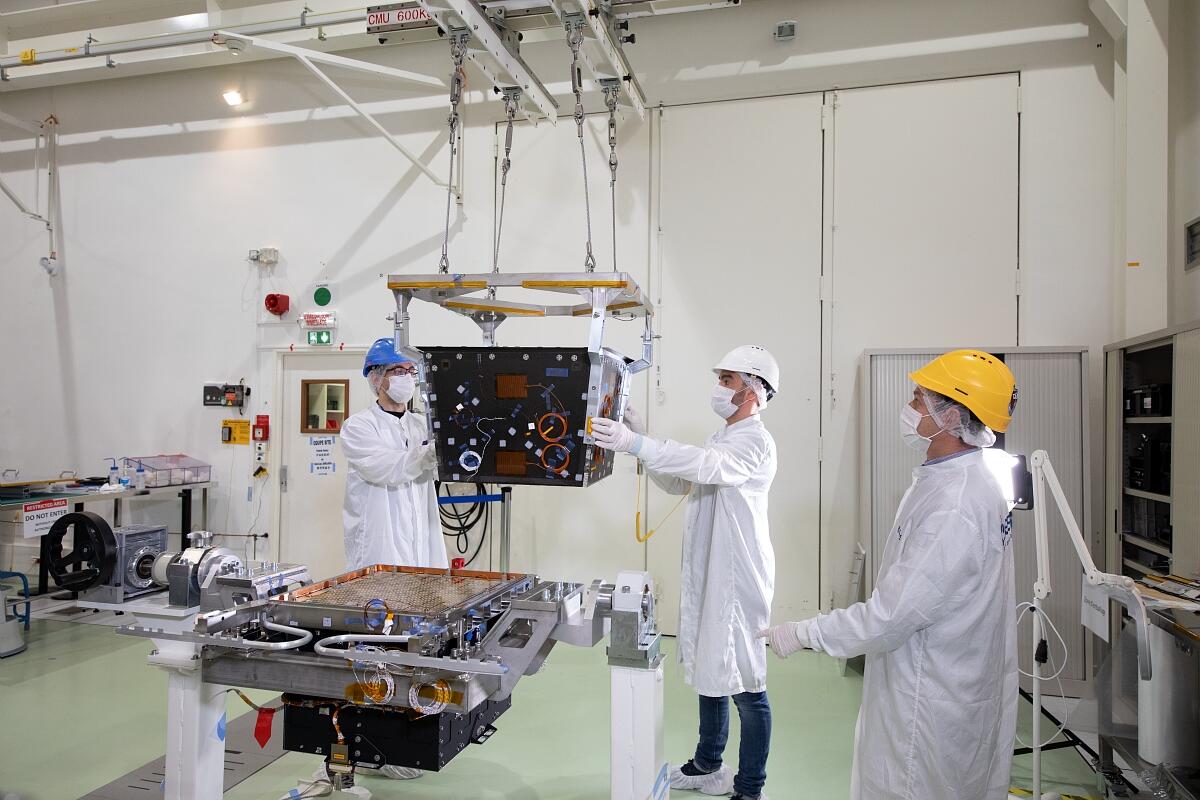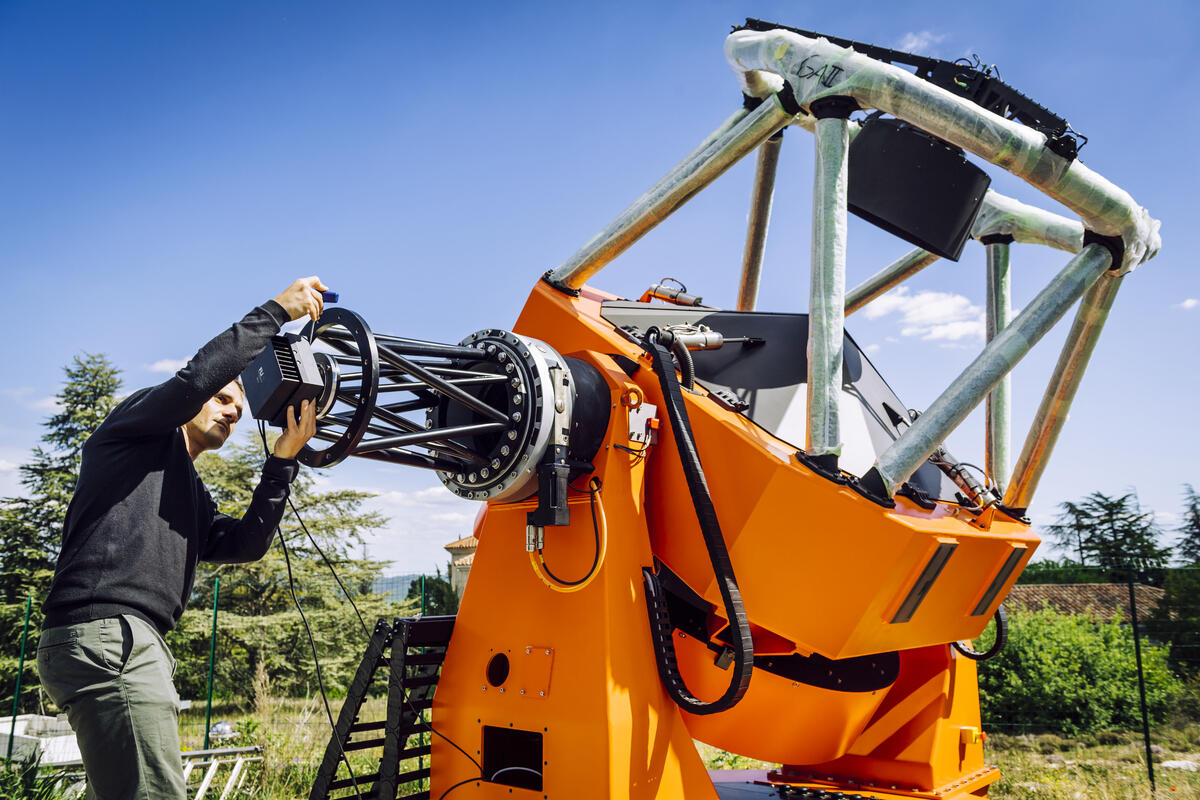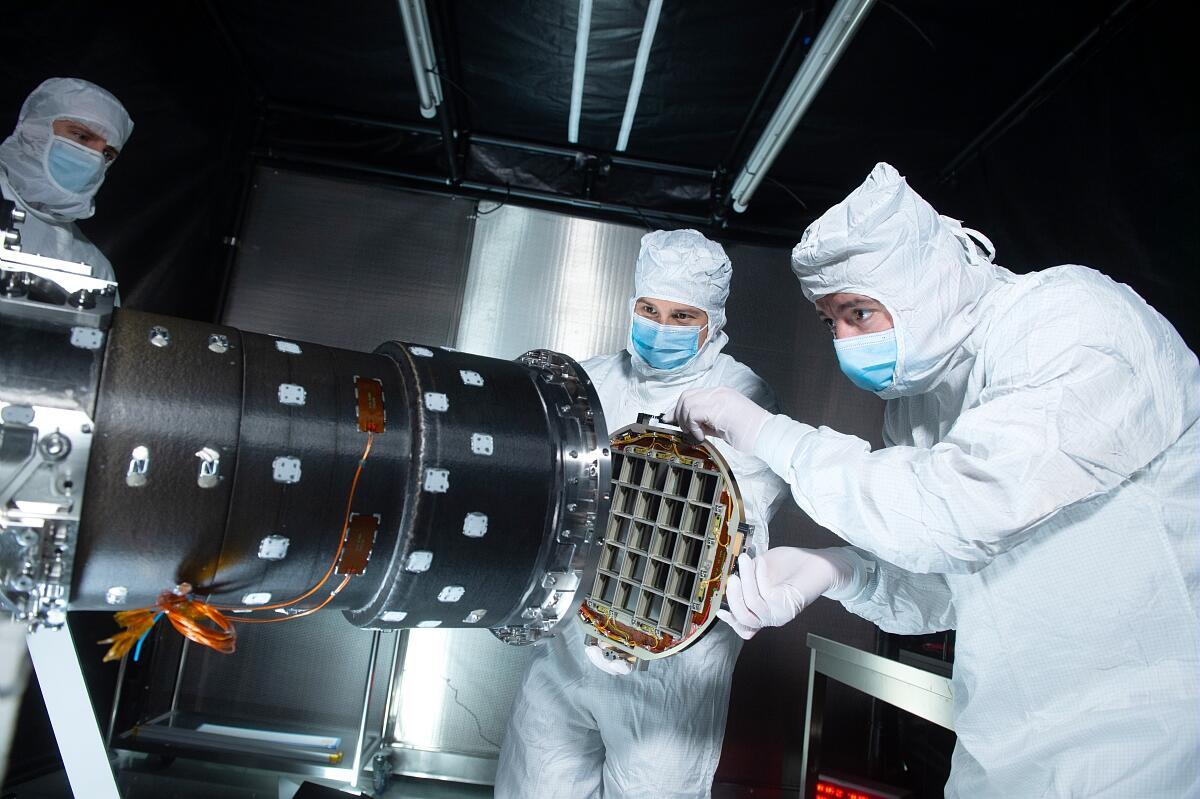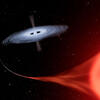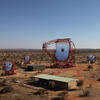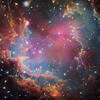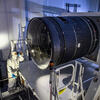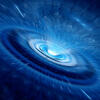You are here
French-Chinese satellite to unlock the secrets of gamma-ray bursts

The most widely accepted theory for the origin of gamma-ray bursts is that they are caused by the collapse of stars 20 to 30 times the mass of the Sun, leading to the formation of a black hole and the ejection of a huge jet of matter. To distant observers this process appears as a relatively brief flash of gamma-rays lasting anything from a second to a minute, which astronomers call a gamma-ray burst. These can also occur when two neutron stars – or a neutron star and a black hole – orbit each other increasingly closely before finally merging. When this happens, a short gamma-ray burst lasting less than two seconds is seen. Monitored from space since 2004 by NASA's Swift satellite, gamma-ray bursts could soon give up some of their secrets, following the commissioning of a newcomer, the SVOM (Space-based multi-band astronomical Variable Objects Monitor) satellite.
Combining ground- and space-based instruments
In 2005, France and China decided to embark on a scientific collaboration with the aim of developing a satellite that could take over from Swift. The result was the SVOM mission, officially launched in 2014, whose goal is to observe the evolution not only of gamma-ray bursts but also of collapsing stars. "Although gamma-ray bursts are only visible for a few seconds or minutes, we can observe the formation of the new black hole for several hours or days, by covering the sky at a number of different wavelengths (X-rays, visible, radio) and on varying time scales," explains Jean-Luc Atteia, an astronomer at the IRAP1. This is where SVOM comes in. "Swift is able to estimate the distance of 20-30% of the gamma-ray bursts it detects. With SVOM, we are hoping to increase this proportion to 50-60%," says Susanna Vergani, at the GEPI lab2, in particular by deploying a strategy that combines ground- and space-based instruments.
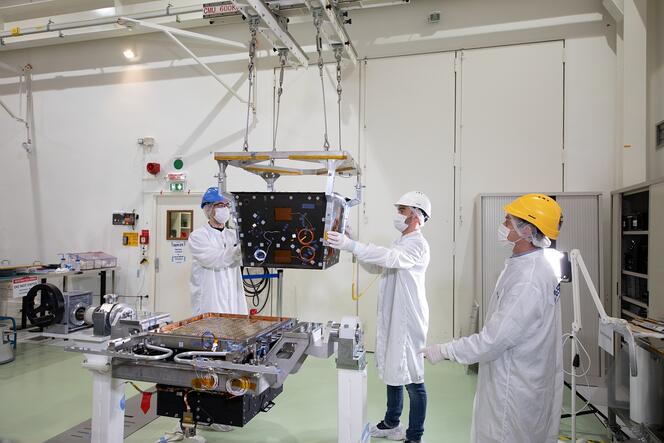
The SVOM mission comprises four of these on board the satellite together with three on the ground (see below), tasked with studying various frequencies in the electromagnetic spectrum. "We can detect some photons in the visible range. But for higher frequencies, we need detectors that can observe in the ultraviolet, X-ray and gamma-ray regions. And to monitor lower frequencies, we must turn to infrared, millimetre and radio wavelengths," Vergani explains.
Two of the on-board instruments, ECLAIRs and GRM, are tasked with detecting the flashes, known as prompt emissions, that occur quite unpredictably. France's ECLAIRs telescope is able to spot bursts in the X-ray and low-energy gamma-ray bands, and rapidly indicate their position in the sky. "It's a detector composed of tiny pixels placed behind a mask. When a gamma-ray burst occurs, it illuminates the detector through the mask, enabling the position of the source to be measured," Atteia explains. As soon as the instruments on board SVOM locate a burst, the information is immediately sent back to Earth via VHF antennas, "which transfer data that is used to identify the afterglow3, locate it, and share this information with the scientific community. It is also at this moment that the ground-based telescopes are activated", Vergani adds.
COLIBRI, a French-Mexican telescope with three cameras
Operating alongside ECLAIRs, the Chinese GRM instrument is also designed to detect prompt emissions. Although not as precise when it comes to locating bursts, the device can nonetheless reveal a larger number of them. Its role is to measure the variation in their luminosity over time and to cover frequencies not detected by ECLAIRs. Together, these two instruments cover the entire range of photons, from high to low energy.
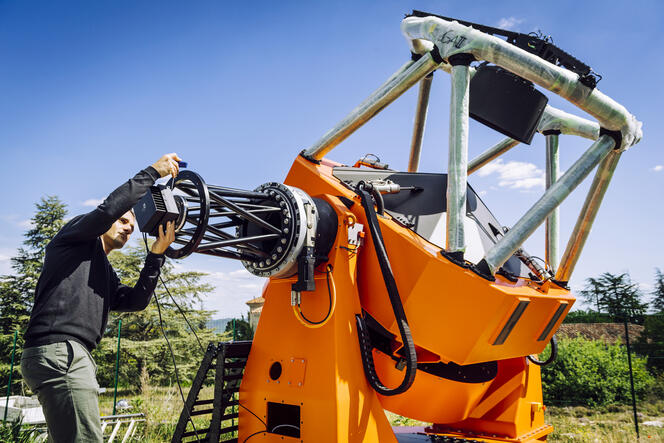
Once a burst has been identified, the onboard MXT and VT telescopes swing into action. Their mission is to observe the afterglow for a period of several hours. The MXT telescope, developed as part of a European collaboration, observes bursts solely in the X-ray domain, while the VT telescope uses the data acquired by ECLAIRs and MXT to observe gamma-ray bursts in the visible range and pinpoint their location in the sky. "Every four to six hours, the satellite transmits all the accumulated data using larger antennas," Vergani explains.
Three other ground-based instruments monitor the detected burst. In under a minute, the two GFT telescopes lock on to its position and accurately measure its celestial coordinates as well as the photometric evolution of the afterglow. They also provide an estimate of its distance. One of the telescopes, the C-GFT, is based at the Jiling Observatory in China. The other one, F-GFT, also called COLIBRI, is currently being installed in Mexico. "This telescope, jointly designed by France and Mexico, uses three cameras to simultaneously observe the entire visible domain, right down to the infrared," says Stéphane Basa, a researcher at the Marseille Astrophysics Laboratory (LAM)4, in southeastern France, which developed COLIBRI. Finally, the Chinese have an array of Ground-based Wide-Angle Cameras (GWAC), which will attempt to catch a visible signal just before, or at the very beginning of, a gamma-ray burst.
Studying the most distant galaxies
Through these observations, the scientific teams are pursuing a number of goals. Firstly, they are hoping to better understand the mechanisms at work during the final stages of a star's life. "When a large star explodes, the amount of energy it releases in a few seconds is equivalent to that emitted by the Sun during its entire lifetime!" Atteia points out.
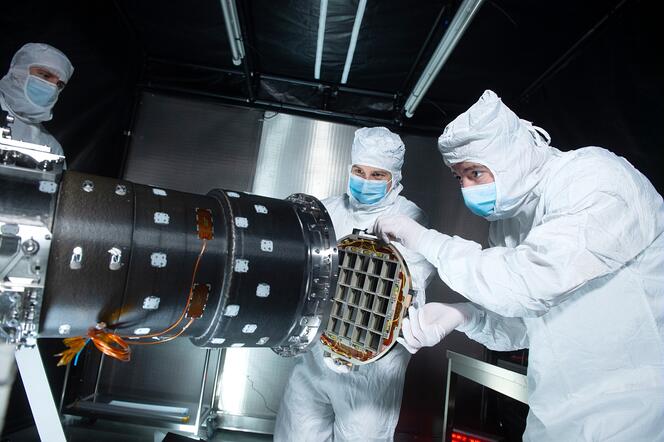
"Gamma-ray bursts can also help us investigate the Universe," Basa adds. "They produce a fantastic jet of light, enabling us to study all the objects they illuminate." Vergani is equally enthusiastic: "This is particularly valuable for the study of distant galaxies, which are partly made up of neutral gas that can only be detected when brightly illuminated from behind. Observations of this kind could help us understand, for example, which chemical elements were formed in the very oldest galaxies."
Finally, new discoveries may be made in the field of particle astrophysics. "We now know that short gamma-ray bursts are also associated with gravitational waves produced when two neutron stars merge. It is during these events that the heavy elements in the Universe, such as gold, are produced. We might therefore be able to find out what other elements are formed during such processes," Vergani concludes. Who knows, the SVOM mission may well end up piercing some of the Universe's best-kept secrets. Watch this space! ♦
---------------------------------------------------------------------------------
The SVOM mission's instruments
The mission combines four on-board and three ground-based instruments.
On board the satellite, the ECLAIRs telescope is tasked with detecting and locating gamma-ray bursts in the X-ray and low-energy gamma-ray band. Under the responsibility of the French space agency CNES, it was developed by three French laboratories: the IRAP institute for research in astrophysics and planetology (CNRS / CNES / Université Paul Sabatier) in Toulouse (southwestern France), the Institute of Research into the Fundamental Laws of the Universe (IRFU) (CEA / Paris-Saclay), and the AstroParticle and Cosmology Laboratory (APC) (CNRS / Université Paris-Cité).
The MXT (Microchannel X-ray Telescope) is designed for the observation of gamma-ray bursts in the soft X-ray domain. It was developed in France by the CNES and the Institute of Research into the Fundamental Laws of the Universe, in close collaboration with the University of Leicester, UK, and the Max Planck Institute for Extraterrestrial Physics in Garching, Germany.
Developed in China, the GRM (Gamma Ray Burst Monitor) measures the spectrum of high-energy bursts, while the VT (Visible Telescope), also designed in China, is responsible for detecting and observing the visible emission (afterglow) produced immediately after a gamma-ray burst.
Observations from space will be complemented by several ground-based facilities. The GWAC Ground-based Wide-Angle Camera, produced in China, studies prompt emissions in the visible domain from some of the bursts detected. The role of the GFT robotic telescopes (Ground Follow-up Telescope) is to accurately measure the coordinates and distance of gamma-ray bursts. The French GFT, COLIBRI, was developed in France by the University of Marseille, the CNRS and the CNES, and by Mexico's National Autonomous University and National Council of Science and Technology. ♦
Further reading on our website
Unprecedented cosmic explosion
Black holes and neutron stars meet up with a bang
- 1. CNRS / CNES / Université Toulouse III - Paul Sabatier.
- 2. CNRS / Observatoire de Paris-PSL.
- 3. The afterglow – which can sometimes last up to several months – is the continuing emission in the X-ray, visible and radio domains that occurs just after the brief gamma-ray flash (the prompt emission), which lasts only a few seconds.
- 4. CNRS / CNES / Aix-Marseille Université.
Author
Specializing in themes related to religions, spirituality and history, Matthieu Sricot works with various media, including Le Monde des Religions, La Vie, Sciences Humaines and even Inrees.



